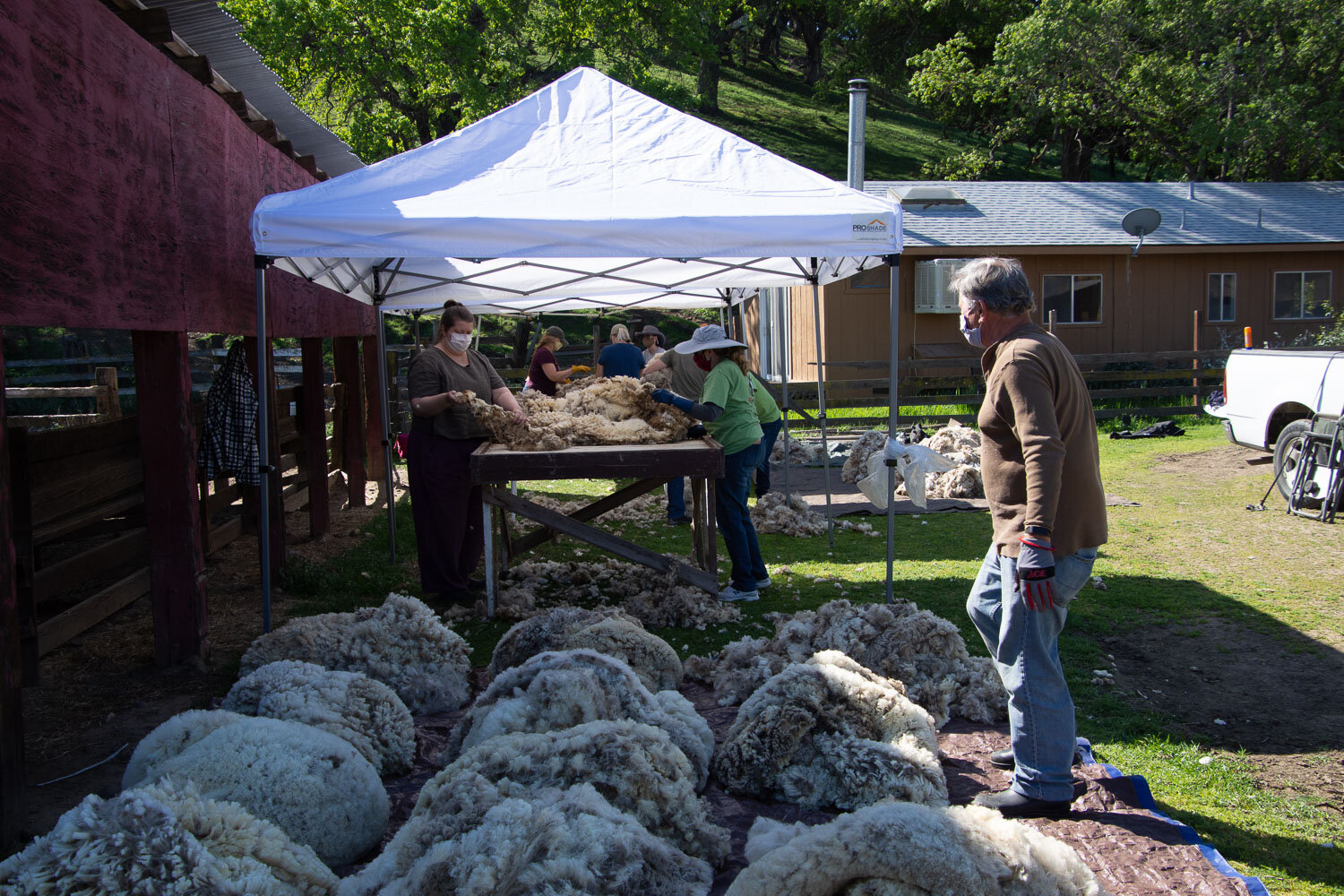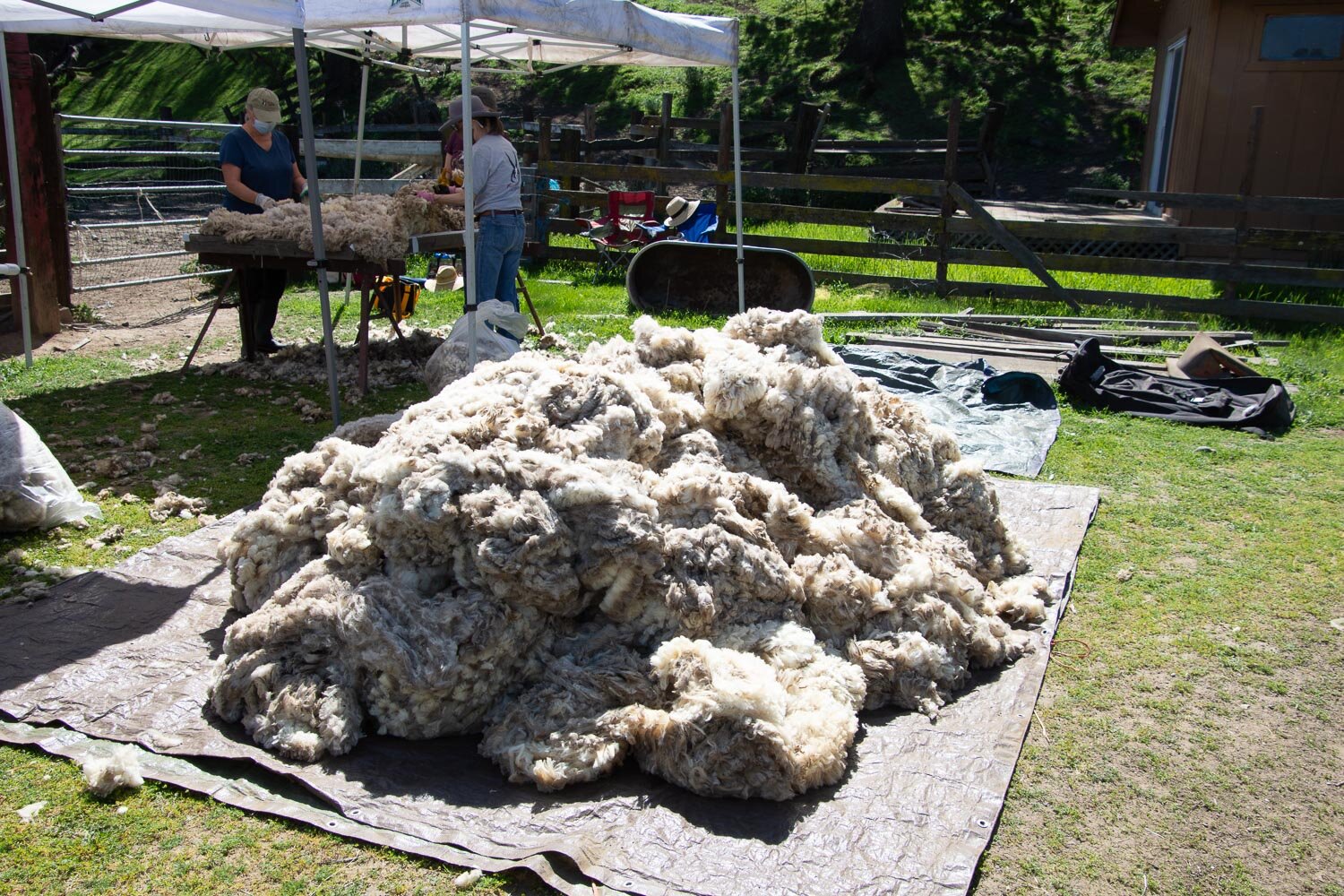Shearing at the Timm Ranch 2021
/This is the sixth year that I have purchased wool from the nearby Timm Ranch on their shearing day. Here is an example of the yarn that is spun from the wool and there is a little bit of info about the ranch and the flock at that link.
We were so lucky with the weather. The shearing had already been postponed because of potential rain and if there had been the north wind as the day before it would not have been nearly as pleasant.
The sheep are what I call a ranch blend of Rambouillet, Polypay, and Targhee, all fine wool breeds.
There are not individual sheep of those breeds, as the ranch has raised their own replacements for quite awhile.
I’m glad that so many Farm Club members were able to help because there were two shearers working and we needed to keep up with them.
As a fleece was shorn Alan took it from the shearers and put it on a tarp near the skirting tables.
After the first few years of working at the shearing we figured out that we’d better bring canopies or we’d be in the sun the whole day. It was looking very festive here—the canopies cover three skirting tables.
We kept up the safety protocol and everyone wore masks. Some of the Farm Club members had been to this shearing in previous years and it was new for others. Susan, Marina, Kimber are in this photo (I think that I’m able to see who is behind the mask.)
Teresa and Doris are here.
Beth, Carol, and Sylvia.
Thanks for this photo, Doris. I am in this one.
At a commercial shearing operation, the classes and skirters have seconds to spend with each fleece if they hope to keep up with the shearing when 6 or 7 shearers are working. We are a lot slower. The reason is that I feel compelled to send wool that is as free of VM (vegetable matter) and other faults as possible. When we skirt we remove any part of the fleece that isn’t up to a chosen standard. We pull off wool from around the edges where there is going to be more debris or felting, wool with paint markings, wool that has more VM, and wool that may be tender (brittle) or short. The huge mills have processes that deal with VM chemically: Carbonising is a continuous process which combines scouring to remove the wool grease and a chemical process which removes vegetable matter such as seeds, burs and grass. Carbonising occurs if the greasy wool contains a high percentage of vegetable matter (%VM), typically in excess of 2% to 3%. There is more info at this link. My wool is going to a mill that doesn’t do that process so it is important to send only wool that is as clean as possible.
I also needed to keep track of how much wool we had because I needed to meet a minimum of 200 pounds for the mill where I’m sending this wool. So after skirting fleeces we filled bags to be weighed. After recording the weight the wool was piled on a tarp to be baled at the end. The reason that we had to keep up with the shearers is that they brought the wool press with them. They would press our wool and any that we didn’t take into bales before they left. It was important to not have to stuff this pile into bags and boxes, but to get it into a bale for shipment.
Much of the ranch property burned in the devastating LNU Complex fire last summer, but the buildings at this location were spared, probably because the sheep graze the 80 acres that is right around the headquarters.
They were certainly lucky that these old barns didn’t burn.
Our pile got to 230 pounds as the shearers were finishing. They dragged it over to the wool press.




















